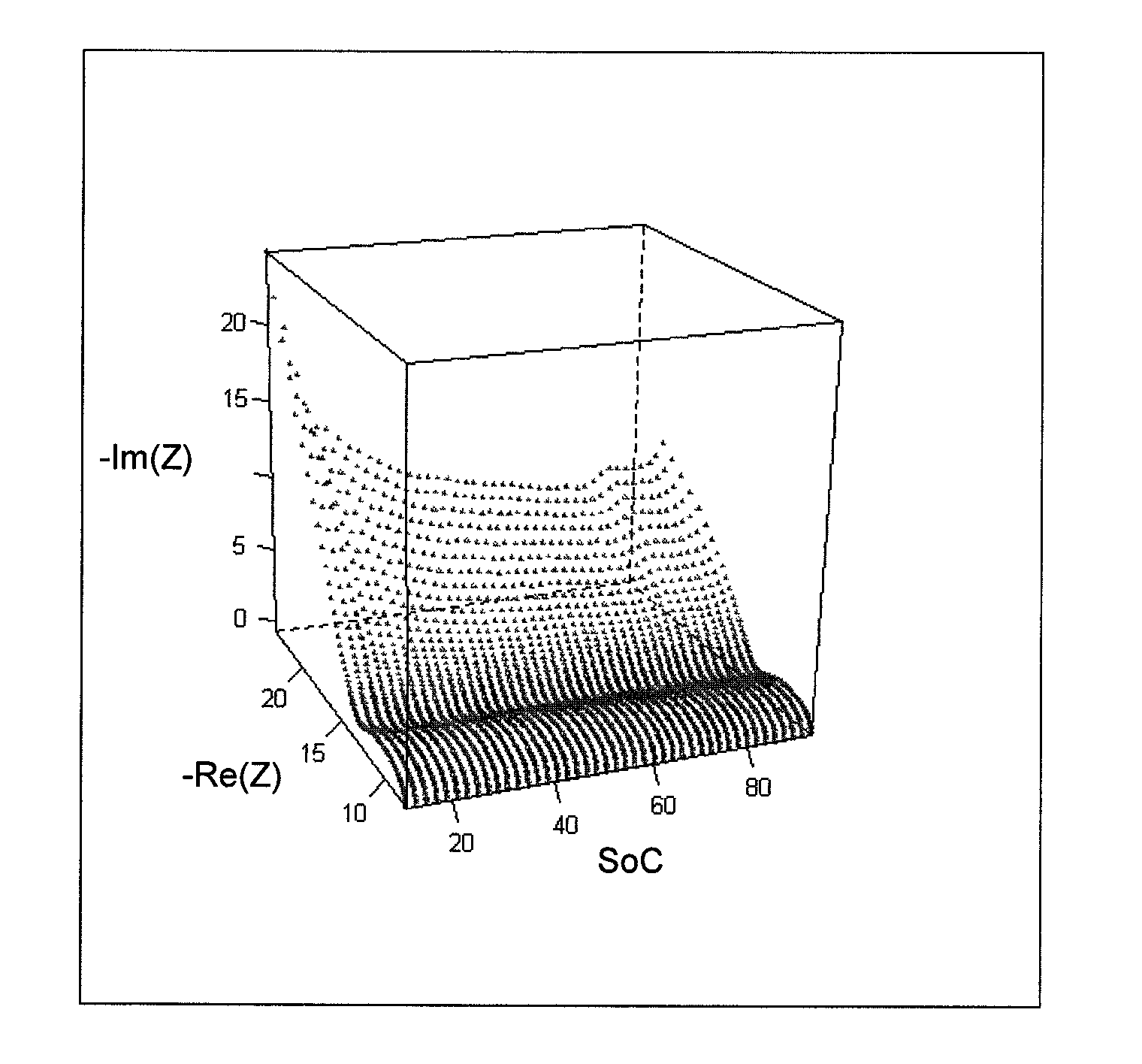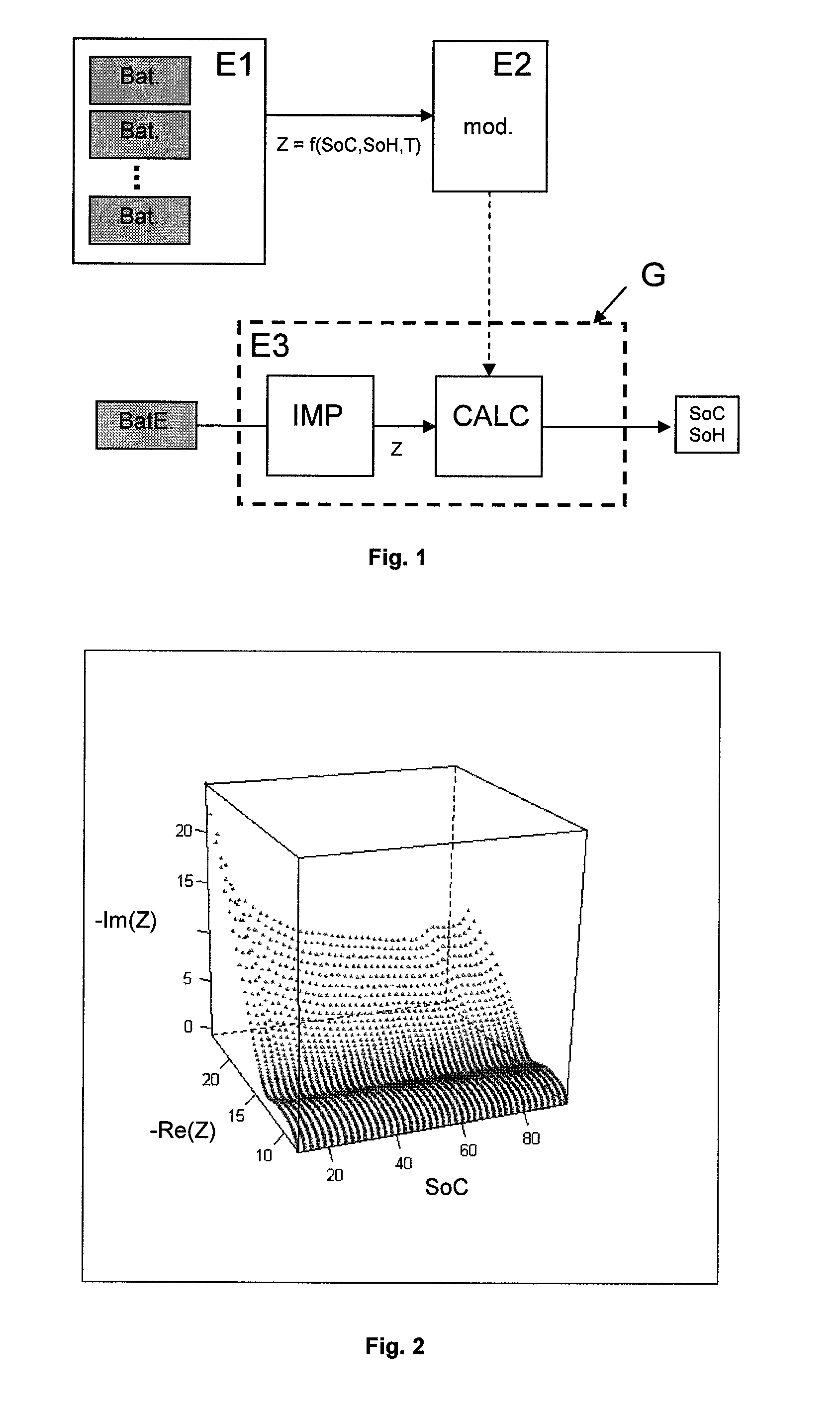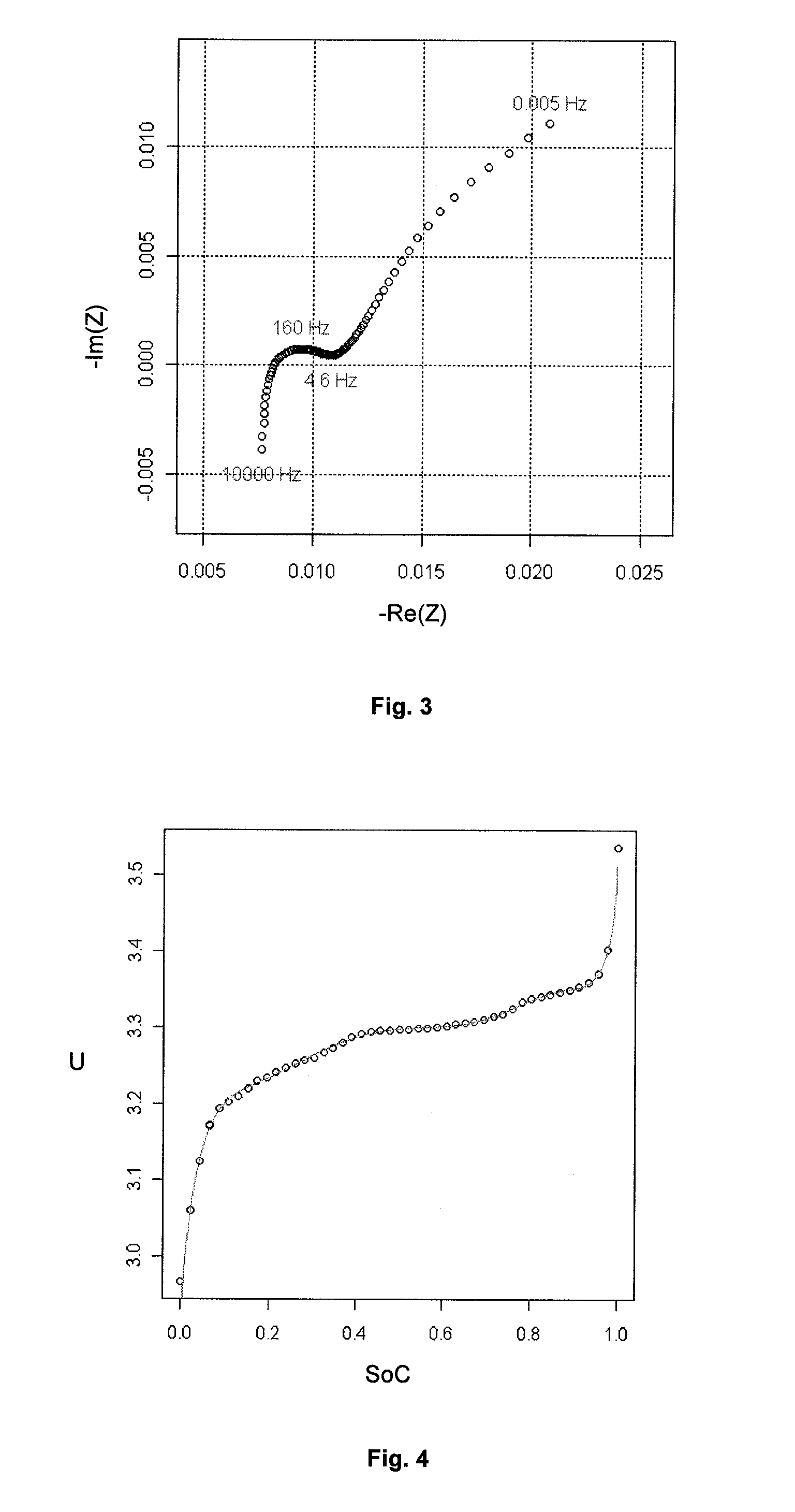In-situ battery diagnosis method using electrochemical impedance spectroscopy
a technology of impedance spectroscopy and in-situ battery, which is applied in the direction of electrical testing, instruments, electric digital data processing, etc., can solve the problems of soc estimation errors, dependencies are in reality much more complicated, and estimation errors
- Summary
- Abstract
- Description
- Claims
- Application Information
AI Technical Summary
Benefits of technology
Problems solved by technology
Method used
Image
Examples
example 1
Case of an Element of Chemical Composition LFP / C
[0103]Stage 1
[0104]FIG. 6 illustrates a Bode diagram wherein ω represents the frequency in Hz, P represents the phase in degrees and Z represents the electrochemical impedance modulus in Ohm. This diagram allows to compare the impedances determined for several states of charge on a C / LFP type battery. These impedances were obtained using successively sinusoidal signals of different frequencies. The impedances can also be obtained differently, for example by superposing a white noise on the battery charge / discharge signals.
[0105]It can be noted that, in the diagram, the impedances are not superimposed and that they evolve as a function of the charged capacity.
[0106]Stage 2
[0107]These differences are quantified according to the invention by adjusting an impedance model on the curves of the impedance diagram by means of the formula as follows:
Z(ω,SoC)=a**ω+b+1c1+d1**ωn1+1c2+d2**ωn2
where a, b, c1, d1, n1, c2, d2, n2 are parameters to be ad...
example 2
Case of an Element of Chemical Composition NCO / C
[0114]This new example allows to test the robustness of the method according to the invention for various battery technologies. The impedance diagram (Nyquist diagram) with 50% SoC of the NCO / C technology is shown in FIG. 9. The shape of this curve suggests the convolution of 3 semi-circles, which allows to define the model as follows:
Z(ω,SoC)=a**ω+b+1c1+d1**ωn1+1c2+d2**ωn2+1c3+d3**ωn3
where a, b, c1, d1, n1, c2, d2, n2, c3, d3, n3 are parameters to be adjusted according to the experimental values.
[0115]By proceeding as in the previous example, this model is adjusted on the impedance diagrams as a function of the frequency, the state of charge and the temperature, and it leads to an impedance model as a function of the SoC, the temperature and the frequency.
[0116]Using another element of identical chemical composition, of known SoC, and the previous model, it is possible to calculate the SoC of this element from a determination of its e...
PUM
| Property | Measurement | Unit |
|---|---|---|
| temperature | aaaaa | aaaaa |
| electrochemical impedance measurements | aaaaa | aaaaa |
| electrochemical impedance | aaaaa | aaaaa |
Abstract
Description
Claims
Application Information
 Login to View More
Login to View More - R&D
- Intellectual Property
- Life Sciences
- Materials
- Tech Scout
- Unparalleled Data Quality
- Higher Quality Content
- 60% Fewer Hallucinations
Browse by: Latest US Patents, China's latest patents, Technical Efficacy Thesaurus, Application Domain, Technology Topic, Popular Technical Reports.
© 2025 PatSnap. All rights reserved.Legal|Privacy policy|Modern Slavery Act Transparency Statement|Sitemap|About US| Contact US: help@patsnap.com



